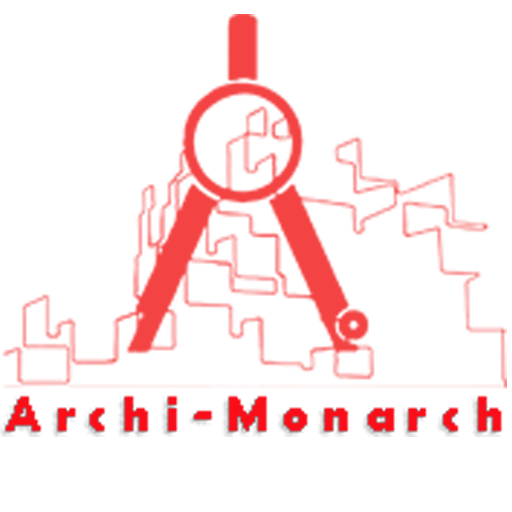A watch tower in architecture is a structure designed primarily for observation, surveillance, or defense. Historically, watch towers were constructed in strategic locations, such as on hills, coastlines, or near borders, to give guards or watchmen a high vantage point to spot potential threats, such as invading forces or fires.
These towers were often part of larger fortifications or castles, acting as lookout points for early warning systems. In more modern contexts, watch towers may be used for monitoring purposes, including surveillance of vast landscapes or wildlife areas.
The architectural design of a watch tower typically incorporates features like height, a narrow base, and a wide top to allow for a clear line of sight in all directions. The construction materials and style may vary depending on the location and historical period, but common materials include stone, brick, and wood.
Today, some watch towers have become iconic architectural features or tourist attractions due to their historic significance or unique design.
If you want to know about the kitchen detail one or water tank detail or landscape detail, please click the link.
Image of Watch tower detail and downloadable (in DWG) link below

Watch tower detail drawing – 1
A watch tower construction detail drawing typically includes a variety of important components to illustrate how the tower is built and functions. This drawing would provide precise dimensions, materials, and design features to ensure the structure is sturdy and serves its purpose effectively.
Here’s a breakdown of what a detailed watch tower construction drawing may include:
Foundation Plan:
- Footing and foundation: The base of the tower, often made of reinforced concrete or stone, is detailed to support the weight of the entire structure. The depth and width of the foundation depend on the type of soil and the tower’s height.
- Drainage system: A plan to ensure that water doesn’t collect at the foundation, preventing erosion or weakening of the structure.
Structural Elements:
- Columns or Pillars: The drawing would indicate the vertical supports (typically stone, concrete, or steel) and their locations, dimensions, and load-bearing capacity.
- Wall Details: If the watch tower includes walls (such as a fortified tower), the thickness, material (e.g., brick, stone), and reinforcement details (e.g., steel rebar) would be specified.
- Floor Slabs and Decking: The floors may consist of wooden, steel, or concrete slabs, and the layout and support of each floor would be shown.
- Ladders or Stairways: Watch towers often have internal ladders or staircases to allow easy access to higher levels. The construction drawing would include the dimensions and materials of these access systems.
Elevation View:
- Height and Number of Levels: The elevation view will show the tower’s height, the number of levels or stories, and any distinctive features like viewing platforms or observation decks.
- Windows or Openings: Watch towers typically feature large openings or narrow windows for unobstructed views. These are marked with dimensions and details about the material (glass, metal, etc.).
- Roof Design: The type of roof (flat, conical, sloped) and materials would be shown, along with any structural reinforcements required for stability.
Platform and Viewing Deck:
- Dimensions of the Platform: The drawing will detail the size of the observation deck, which may include railings or guardrails for safety.
- Safety Features: A key part of the drawing would be the design of safety elements, including guardrails, non-slip surfaces, and emergency access points.
Materials and Finishes:
- Material Specifications: Details on the materials used throughout the tower, including the type of stone, brick, wood, or steel, along with any finishes (e.g., weatherproofing, corrosion resistance).
- Exterior and Interior Finishes: Depending on the design, the finishes for both the exterior (stone cladding, paint) and interior (wood paneling, flooring materials) would be specified.
Detail of Joints and Connections:
- Reinforcement Details: If the tower uses steel or concrete, the drawings will show how these materials are reinforced with rebar or steel beams to support the structure.
- Connection Points: Where different structural elements meet (such as columns and beams or walls and floors), the drawing will provide detailed views of how they are connected, ensuring stability.
Accessibility and Emergency Features:
- Access Points: Whether the tower has a main entrance, service doors, or emergency exits, all access points are marked.
- Fire Escapes/Exit Ladders: In case of emergency, escape routes would be indicated in the drawing, especially for taller towers.
Lighting and Electrical Systems:
- Lighting for Visibility: Watch towers, especially those in remote areas, may require lighting systems for night visibility. The details for wiring and installation of lights (solar or electric) will be shown.
- Power Supply: If the tower needs electricity for equipment (e.g., surveillance cameras), this would be incorporated into the drawing.
Technical Specifications:
- Wind Load and Structural Stability: Given the height and exposed nature of a watch tower, the drawing may include calculations or references to structural safety standards, especially in areas with high winds or seismic activity.
- Load-bearing Requirements: Specifications on how much weight the structure can safely support, considering both the tower’s materials and the equipment used (e.g., surveillance systems, antennas).
A watch tower construction detail drawing serves as a guide for builders and engineers to follow, ensuring that every part of the tower is constructed safely, efficiently, and in compliance with regulations. The design can vary based on the tower’s purpose, whether for military defense, fire watch, or modern surveillance.
Our tips to help you improve your architectural Watch tower detailing.
